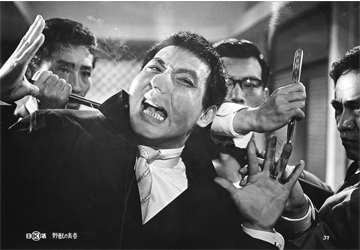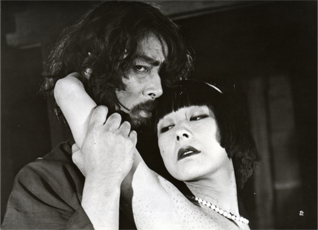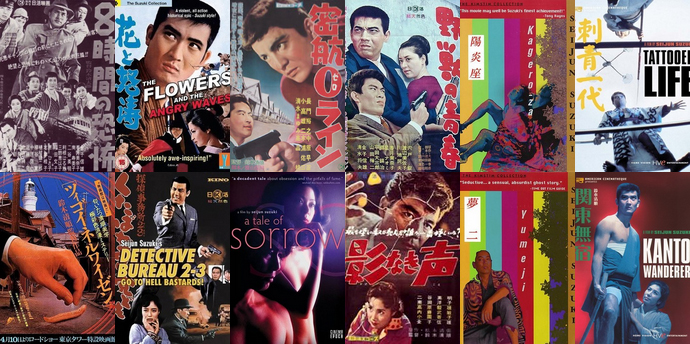|
Suzuki Seijun entered the Kamakura Academy film department and later, joined Shochiku Studio in 1948. He moved to Nikkatsu Studio in 1954 and was promoted from assistant director to full director in 1956. Suzuki's job at Nikkatsu was to make B movies out of scripts that were assigned to him. In the mid-1960s, with dozens such films under his belt, Suzuki's restlessness began to come through as he and his collaborators, art director Takeo Kimura and cinematographers Shigeyoshi Mine and Kazue Nagatsuka, began experimenting with the assigned material. These films established Suzuki as a stylistic innovator working within - and rebelling against - the commercial constraints of B-movie studio work. Among his remarkable styles, Suzuki uses colours, distorted space and time, unconnected shots, mirror reflections. In particular, Suzuki uses the unconnected scenes, where he jumps between two unconnected scenes.
Suzuki became famous when he was fired by Nikkatsu Studios in 1967 for making films that, as he put it, "made no sense and made no money." Suzuki's masterful tale of a disillusioned hit-man, addicted to the smell of cooking rice, who has a surreal run-in with a mystical butterfly woman was a bridge too far for Nikkatsu, the film would become a hit with the new generation of Japanese young people. His freewheeling approach and audacious experimentation gained Suzuki a cult following in Japan and abroad. After being dismissed and blacklisted in the industry, he didn't return to full-time production until 1977 with A Tale of Sorrow and Sadness.
Following which, in the 1980s, Suzuki reinvented himself as an independent filmmaker. Freed from the commercial obligations of studio work, he elected to indulge his passion for the Taisho era (1912-26), a brief period of Japanese history that has been likened to Europe's Belle Epoque and America's Roaring Twenties. Though not linked by plot, these three films - Zigeunerweisen, Kagero-za, and Yumeji - embody the hedonistic cultural atmosphere, blend of Eastern and Western art and fashion, and political extremes of the 1920s, infused with Suzuki's own eccentric vision of the time.
In the 1990s, a traveling retrospective brought long-overdue attention to Suzuki's films in the United States and Europe. A new generation of devotees, most notably Jim Jarmusch and Quentin Tarantino, praised Suzuki in the press and referenced his work in their films - Ghost Dog and Reservoir Dogs. Perhaps inspired by this newfound attention, Suzuki returned to filmmaking after another decade-long absence.
|













